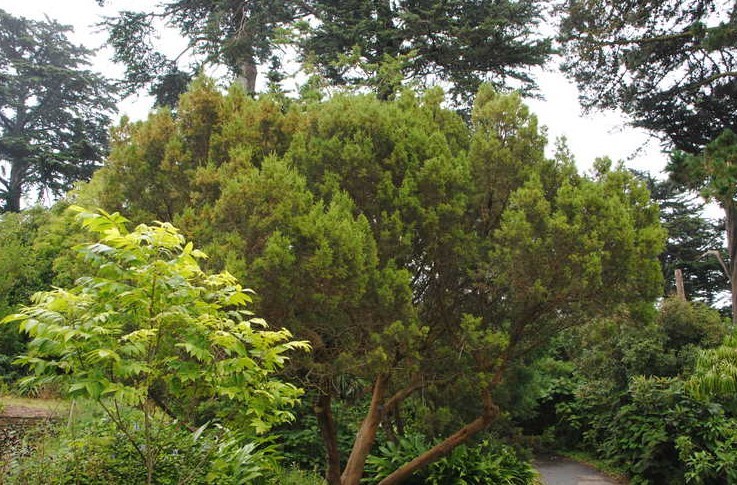Widdringtonia cedarbergensis, as described in 1966 by Judith Anne Marsh, in Bothalia, 9th edition, is commonly known as Cape or Clanwilliam cedar in the English language, as well as Clanwilliamseder or sederboom in Afrikaans. The species name recognizes South Africa's Cederberg Mountains, where this conifer is endemic.
Description. Cape cedar is an evergreen, coniferous species of shrubby tree that grows to mature heights of 65 feet (20 m) tall. Old plants become spreading, gnarled and massive.
Distribution. This species is native to South Africa's Cape Province, in the Cederberg Mountains, occurring singly or in scattered groups on rocky outcrops and mountaintops.
Cold hardy to USDA Zone 9, cold hardiness limit between 20 to 30°F (-1.1 to -6.7°C).


